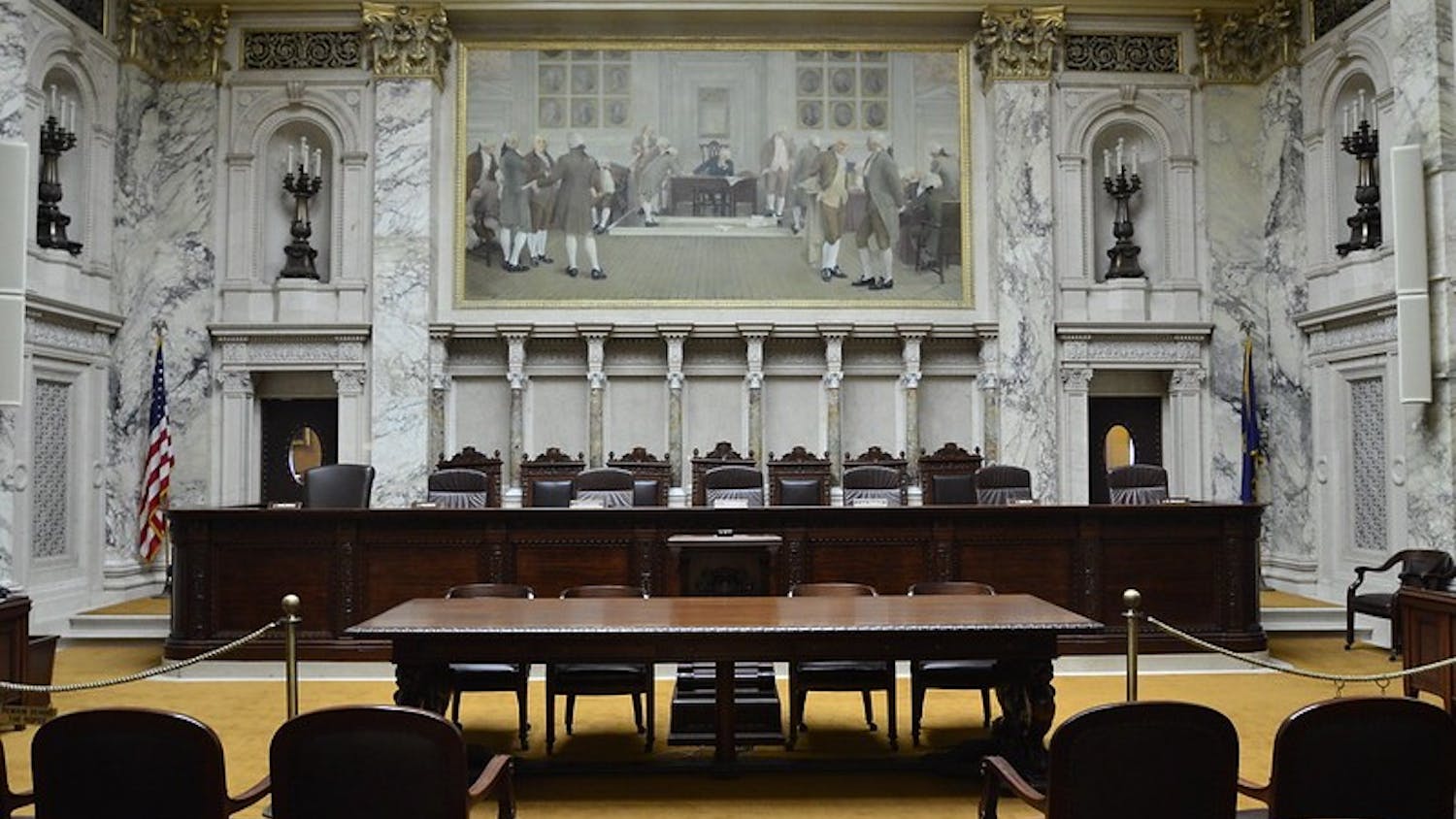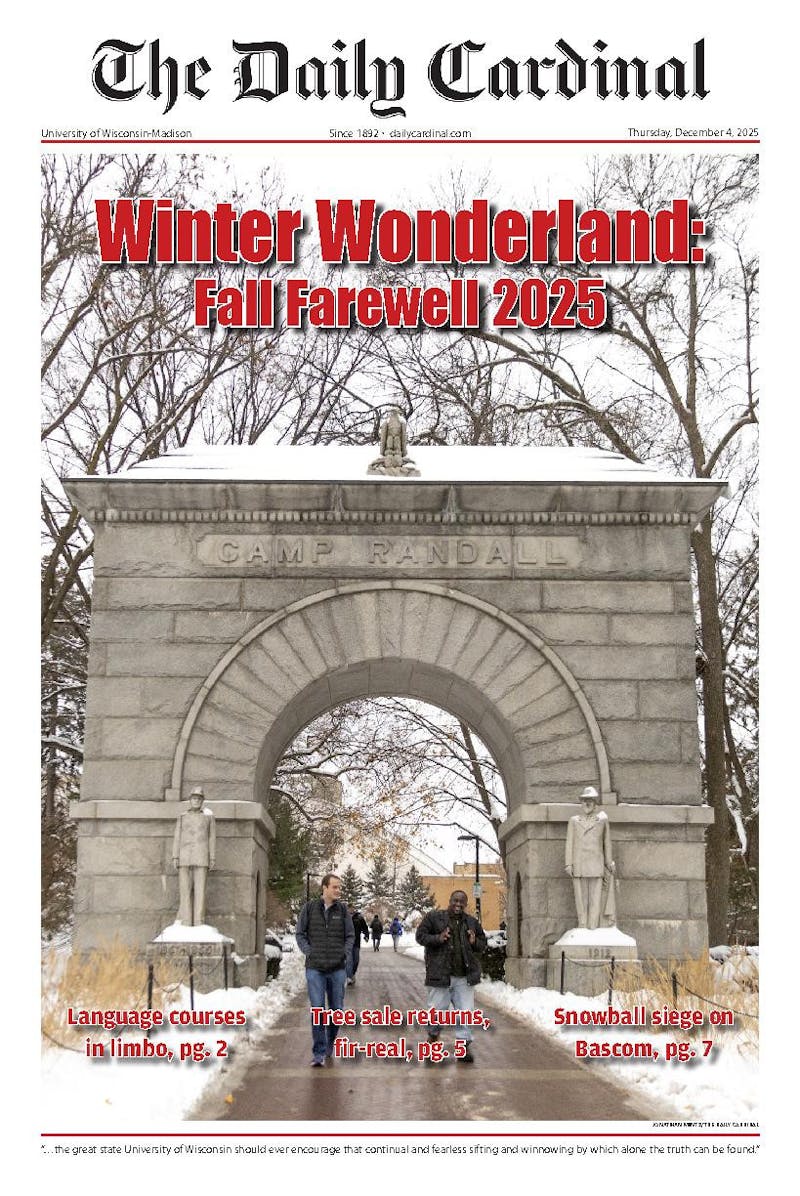David Hajdu gives the folk scene a thorough examination and in his book \Positively 4th Street: The Lives and Times of Bob Dylan, Joan Baez, Mimi Baez Farina and Richard Farina."" Hajdu follows the lives of these four characters as their interaction brings the folk era to its fruition. Starting from Greenwich Village, the book traces the romantic, sibling and professional struggles of the Baez sisters and the men they loved. Hajdu knows the reasons that they talk behind each others' backs.
""Positively 4th Street"" unravels the myths surrounding the early '60s folk scene while giving close attention to four titans of the time. Farina is revealed to be the storyteller that almost lived up to all the fabrications he created about himself. Dylan is remote and always just wants to be on the side that's winning. Meanwhile Joan and Mimi are given the depth they deserve.
The Daily Cardinal had the honor of making contact with Mr. Hajdu.
The Daily Cardinal: Are there any tales that Richard Farina has left untold?
David Hajdu: There are tales that he spun and tales spun about him that I didn't include, just like stories about the other three figures. There is a story about him involving him with his first wife, Carolyn Hester, visiting his college friends, Kirk and Faith Sayles. They were having dinner and Carolyn excused herself to the restroom. While she was gone, Richard told the Sayles that Carolyn was a kleptomaniac and she's upstairs alone. He said, ""Before we leave make sure to check the upstairs."" It was completely made up. Here you have him spinning bad boy's tales about somebody else just to create an aura steeped in danger. I didn't include that because it wasn't terribly pertinent to the story I was telling.
You could probably have a convention of people repeating stories Richard Farina told. Ineveitably in the end they would find out that each story was a story they had told him at one point. The stories kept coming back in new and strange inversions.
When I was your age, just coming to the Village, it was the very last gasp of the folk scene. Bob Dylan was still popping into Gerde's Folk City, which still existed. He and Joan still played together there in the '70s. It still had a kind of bohemian feel to it. Now it's just a theme-park version of itself. But in those days there was still a feel of that original vibe.
DC: There's a passage where Joan and Bob are together that Joan assumes the role of the subordinate housewife. How reflective was their relationship to changing roles of men and women?
DH: Joan, because she was a leader, came out of one tradition and was blazing a trail toward a new tradition. In her early adulthood she was clearly ambivalent about what her role should be. Maybe this was a struggle between her conditional sensibility and her aspirational sensibility. Her mother remains a brilliant and strong woman. [She is] a very deep influence on all three of their daughters, but had a very subordinate role in the household. She kept house while her husband traveled around the world, seeing new cities in the course of his career. She never even had a career. This was something that was in Joan's bones because it was in her environment and it was something she was trying to fight at the same time. I think you see that ambivalence in her behavior toward Dylan. She saw Dylan as a figure who could incite social change. Although I don't think that feminism was an explicit part of Dylan's message, it was of a piece. It's ironic to play a role in enacting social change while the role she took on was subordinate. That's a function of her being a figure with one foot in each tradition.
I'm of a completely different generation from Joan. I grew up with punk rock. Folk music was not my parents' music, but my big brother's music, 10 years older than me.
DC: Even Dylan wasn't part of the baby boomer generation.
DH: You must remember that these people were products of the '50s. We associate them with the '60s because they defined the '60s. They were products of the Eisenhower era.
DC: Do you agree with Peter Bikel's statement that the singing of ""We Shall Overcome"" at the 1963 Newport Folk Festival was ""the apogee of the folk movement?""
DH: It's a commonly held belief and he's a dramatic figure. He sees things in dramatic terms. It's nice to have an image in your mind that's the pinnacle, apogee or apex of all things coming together. I think that's a little reductive. I can understand how he saw that as a moment when the optimism of the folk era seemed to be fulfilling its promise. Anything seemed possible. There were blacks and whites, people of different generations leading a crowd of thousands, heavy in the sentiment of the civil rights movement and the burgeoning anti-war movement with a message that the world can change. I can see that.
One of the points I made in the book is that for most of the people watching that moment, the music Pete Seeger and Theodore Bikel were singing was already outdated and old-fashioned. The people on the other side of the stage had already seen Elvis. They knew Chuck Berry. There was something about the rosy attitude of the folk traditionalists that was already out of date when it was at its peak. It had always been out of touch with the darker, gritty quality of rock 'n' roll and it took a little longer for all that to come together. It began in Newport with Dylan and his rock 'n' roll performance.
DC: You hear many different accounts about how the audience reacted when Dylan plugged in. I liked how the book shook apart all the myths.
DH: It's odd looking at the original evidence and looking at the newspaper accounts as a revelation. They don't portray the event as any kind of catharsis. They don't portray any near-riot in the audience. All that was a coloration or reinvention of the event after the fact. It certainly didn't happen that way. There was a little booing, but certainly not because the audience was shocked, shocked, shocked that Dylan plugged in. You couldn't have driven to Newport without hearing ""Like a Rolling Stone"" on the radio. ""Bringing It All Back Home"" was released months ago; it was a big hit. The only thing that would have shocked the audience is if Dylan would have came out with an acoustic guitar, singing ""Blowin' in the Wind"" again. That would have shocked everybody.
DC: What do you make of Dylan's ability to last as long as he has?
DH: In the '60s he was already fully formed. He already reinvented himself a half-dozen times by then. He already showed that he had the quality to endure. That accounts for his success today. He showed it when he hitchhiked to New York. Originally he was a rock 'n' roll guy. Originally he was a Little Richard imitator with the name Elston Gunn. He wore pink shirts and bow ties and he played the piano. By the time he hitchhiked to Greenwich Village in 1961 he had already reinvented himself. He's hardly recognizable to this day.
That ability to both reflect the time and lead is essential. The Beatles had to do it. Performers before rock 'n' roll did it. George Gershwin did, Duke Ellington had to. He always reflected the time while taking the audience into the future. That's Dylan's gift and he's had it from the beginning; it accounts for his longevity.
DC: Do you have any future plans for a follow-up work?
DH: I'm working on a book about pulp culture in the '50s. I have a thesis that there was a forgotten moment in American pop culture when pulp literature was more popular than movies and television. It introduced a level of violence and sex to mainstream America that has never left us and all this is a result of the pulp literature of the '50s. I think it largely accounts for the nature of our popular culture today.
David Hajdu will be appearing at Canterbury Booksellers, 315 W. Gorham St., on Wednesday, April 3 at 7:00 p.m. ""Positively 4th Street: The Lives and Times of Joan Baez, Bob Dylan, Mimi Baez Farina and Richard Farina"" is published by North Point Press.
'Interview conducted by Ben Schultz





